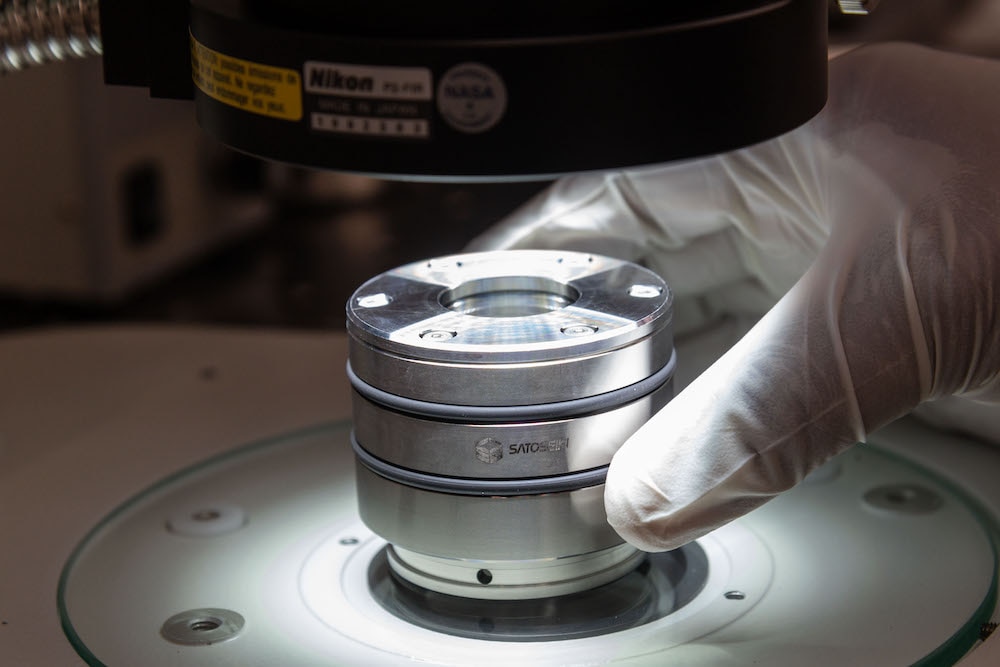Create a free profile to get unlimited access to exclusive videos, sweepstakes, and more!
NASA got a Ryugu sample, and it could be a time capsule of the solar system
NASA now has a rare sample from Asteroid Ryugu, and the secrets of the solar system might be hiding in there.

We’ve been waiting for this since 2014. JAXA’s Hayabusa2 spacecraft recently dropped off samples from the asteroid Ryugu on Earth; NASA now has one of those rare samples.
Asteroids are the leftovers from solar system formation, hunks of rock that flew everywhere as objects that would eventually become planets and moons were colliding. They can also be time capsules holding evidence of what happened in the early solar system for billions of years. Some of that has been revealed by meteorites that fell to Earth, but the sample from this C-type, or carbonaceous, asteroid is pristine because it came straight from space.
Ryugu remains unadulterated by whatever on Earth might have physically and chemically messed with meteorites that shot through the atmosphere. It could tell us anything from its origin and evolution to how life may have spawned here. NASA Senior Astrobiologist Jason Dworkin, Project Scientist for OSIRIS-ReX (which is on its way back with samples from asteroid Bennu) will be analyzing this extraordinary space dust. NASA will be handing a sample of Bennu over to JAXA in exchange for the Ryugu sample when OSIRIS ReX returns in 2023.
“The opportunities that sample return brings also spur development of new techniques,” Dworkin told SYFY WIRE. “The advances in analyzing microchips for tiny imperfections have led to better characterization of exomaterials, and advances in biotechnology and molecular forensics have led to improvements in extraterrestrial sample analysis.”
Extraterrestrial samples have continued to be studied long after they landed on Earth. Because technology is constantly evolving, and new methods of analysis will always emerge, even Apollo samples are still being re-analyzed for anything that might have been missed. Discoveries are still being made from lunar dust that touched down in the ‘70s. Dworkin has also been able to take techniques used for proteomics (the study of protein groups and their behaviors) and adjusted them to find out more about the complex molecules and low levels of proteins in space rocks.
Mass spectrometry is also invaluable for finding out what is in samples that were brought to Earth from other bodies. By measuring the ratio of mass to charge in molecules, it can find out their exact weight. It has become much more hi-res since the Apollo era, and can determine how heavy microscopic fragments are, measure stable isotopes in molecules, and identify compounds that may have been previously unknown. If the Martian samples that will make their way back have any evidence of life as we never knew it, mass spectrometry may see that.
“Fourier transform mass spectrometry is one technique we use,” said Dworkin. “This ultrahigh resolution mass spectrometry technique can differentiate target molecules from the background. We add a modern chromatographic front end, called ultrahigh precision liquid chromatography, to separate isomers before they are measured by the mass spectrometer.”
Isomers are compounds that have the same formula, but each has its atoms arranged in a totally different way, which changes properties around. By using chromatography, molecules from these isomers can be separated as they pass through porous material, since the arrangements of atoms can give away unique chemical signatures. There could hypothetically be a rock sample with one amino acid that may have been essential for life, and then another, with the exact same atoms in an alternate arrangement, that does not indicate possible life.
Dworkin is intensely interested in how life came out of the void. He uses even more sophisticated methods of mass spectrometry and chromatography, and is eager to analyze samples from Bennu and compare that asteroid to Ryugu. Where they formed, when they formed, whether they contain organics, if those organics could be of biological (as opposed to abiotic) origin, and what they might have run into at the dawn of the solar system are all questions he wants to answer. More will come out of these asteroids as technology advances.
“Samples from both objects will be stored for generations,” he said. “Just like with the Apollo samples before, new methods can be developed to ask new questions of these samples. The future is bright for sample analysis.”


























